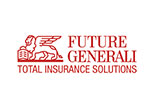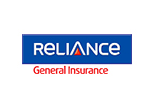Car Paint Protection Film (PPF): Importance, Types and Insurance Coverage
Car Paint Protection Film
It can be difficult to keep your car looking nice and its paint job intact in an environment where cars are subjected to a lot of outside elements including dust, road debris, stone chips, severe weather and UV rays. Car Paint Protection Film, or PPF, is one of the creative ideas that got its start to solve this problem. In this piece, we explore the value of PPF, the different kinds that are on the market, and the subtleties of insurance coverage that are relevant to it in the Indian setting.
Table of Contents
- What is a Paint Protection Film?
- Why is it important to maintain your car's looks with PPF?
- Features of Paint Protection Film for Cars
- What Kinds of Damages Can Paint Protection Film Stop?
- Advantages of Paint Protection Film
- Paint Protection Film: How Does It Operate?
- Different PPF Layers' Functions:
- Paint Protection Film Types
- Procedure for Installing PPF
- Drawbacks of PPF
- How to Care for Paint Protection Film on a Car?
- Insurance Policy for Paint Protection Film in Automobiles
- In summary
- FAQs
What is a Paint Protection Film?
PPF, also known as car paint protection film, is a thermoplastic urethane film that is sprayed onto the painted surfaces of cars to protect the paint finish from dings, scratches, and contaminants like bug splatter, bird droppings, and bad weather. It serves as a barrier to protect the aesthetics and market value of your vehicle.

Why is it important to maintain your car's looks with PPF?
Your car is an important investment and a representation of your individual style, not just a means of transportation. Maintaining the car's looks is mostly dependent on its paint job. PPF serves as a shield to keep your car safe from little dings and scratches, keeping it looking brand new for longer.
Cost-Selective Upkeep
In the long term, applying a PPF car film may save you a significant sum of money on maintenance expenses. Over time, frequent exposure to road grime, bird droppings, and inclement weather can erode the paint on an automobile. By considerably reducing wear and tear, a protective coating can lower the need for expensive paint repairs more frequently.
Increased Value at Resale
The resale value of your car can be significantly increased by keeping its paint in good condition. Purchasers frequently focus on an automobile's external condition, and a PPF guarantees that the vehicle will maintain its glossy finish, leaving a lasting impression on potential purchasers.
Defence Against Environmental Elements
The weather and roads in India may be very hard on your car. The weather continuously affects the outside of your car, from intense heat to non stop rain. Paint Protection Film offers a strong barrier against various environmental elements, preventing paint fading and degradation.
Car Paint Protection Film Types
Many PPF variants have entered the market in an effort to offer superior features and protection. Here, we examine the several categories that you may find useful:
Transparent or Clear PPF
Owners of cars choose this option because it provides protection without changing the vehicle's original hue. It offers a great barrier against stone chips and bug splatters and is almost undetectable.
Pottery Coated PPF
The ceramic-coated PPF, a relatively recent addition to the market, gives the car a glossy look in addition to protection. Because of the nanoceramic particles it contains, it is more resistant to stains and chemical etching.
Auto-Repairing PPF
The self-healing PPF is superior to the others because it has a special characteristic that allows small dents and swirl marks to "heal" on their own when exposed to heat. This kind of film recovers from little losses on its own, thanks to sophisticated technology, keeping it looking flawless.
PPF Matte Finish
The matte finish PPF might be a great choice for people who want to give their automobile a unique appearance. It gives the vehicle the essential defence against outside damage while also transforming its glossy surface into a sleek matte finish.
Features of Paint Protection Film for Cars
- Self-healing: Many PPFs have the ability to mend small scratches on their own when heated.
- UV Protection: By serving as a barrier against damaging UV rays, it keeps paint from fading.
- Transparent and Invisible: PPF is incredibly clear, guaranteeing that the car's colour and style remain intact.
- Extremely Sturdy: PPFs are renowned for their endurance and are made to withstand harsh environments.
- Non-Yellowing: High-quality PPFs maintain their clarity and protection for the duration of their useful lives by not yellowing.
- Easy Maintenance: You can clean it easily by just using soap.
What Kinds of Damages Can Paint Protection Film Stop?
- Scratches and swirls: Frequent causes of the same include dust, filth, and inadequate cleaning.
- Stone Chips: Debris thrown while driving off the road.
- Bird droppings: Quite acidic, they can cause paint damage if not removed.
- UV Damage: Paint fading may result from prolonged exposure.
- Water Stains: The etching effects of hard water can be seen in paint stains.
- Bug damage: Insects and tree sap can harm paint and leave stains.
Advantages of Paint Protection Film
The advantages include:
- Enhanced Finish: PPFs increase the radiance of the paint by giving the vehicle a glossy, polished look.
- Better Corrosion Protection: PPF functions as a barrier to shield against rain, road salts, and other corrosive substances.
- Quick Healing of Small Scratches: When the PPF surface is exposed to heat, small scratches vanish instantly, keeping the surface immaculate.
- High Temperature Resistance: PPFs are designed to withstand the harsh Indian sun and do not distort or bubble.
- Repairability: Parts of the film can be replaced without having to recreate the entire surface in the event of damage.
- Maintains Resale Value: PPF preserves the paint quality of the vehicle, raising its resale value.
Paint Protection Film: How Does It Operate?
PPF is a thermoplastic urethane film that is used on an automobile's painted surfaces. It forms a shield to keep the paint of the car safe from outside influences. It adheres tightly to the car's surface using its adhesive side, protecting the paint from outside pollutants.
Different PPF Layers' Functions:
- Top Layer: It works by offering defence against stains and scratches, this layer is the outermost layer.
- Core Layer: The self-healing qualities are located here and are usually composed of polyurethane. Since it is flexible, the film will follow the curves of the car.
- Adhesive Layer: Enables the PPF to stick to the exterior of the car.
Paint Protection Film Types
- Standard Clear Film: Transparent, offering rudimentary defence against scuffs and UV radiation.
- With the addition of hydrophobic qualities, ceramic PPF provides improved protection against water and pollutants.
- Matte or Satin Finish PPF: Provides protection and a distinctive matte finish for the car.
Procedure for Installing PPF
- Cleaning: To get rid of impurities, the car's surface is meticulously cleaned.
- Preparation: The car is ready, and the PPF is cut to fit the measurements of the car.
- Application: The PPF is applied using a slip solution. After that, it's squeezed to get rid of bubbles and guarantee a tight fit.
- Curing: The film is allowed to adhere by letting the vehicle air dry.
Drawbacks of PPF
- Not Unbreakable: Despite its durability, PPF is not impervious to major harm.
- Yellowing Over Time: PPF of lower quality may eventually turn yellow.
- Cost: Premium PPF can be somewhat costly.
How to Care for Paint Protection Film on a Car?
Don't use abrasive towels when cleaning gently. Opt for a gentle microfiber cloth.
Stay out of the direct sun: Use a car cover or park the vehicle in the shade whenever you can.
Continual Inspection: Check the PPF for any damage, and take immediate action to fix it.
Insurance Policy for Paint Protection Film in Automobiles
Having grasped the significance and varieties of PPFs accessible in the industry, let us now focus on the insurance facet. In India, most auto insurance policies provide coverage for losses brought on by theft, natural disasters, and accidents. But it's frequently not clear how add-ons and accessories like PPF are covered. What you should know is as follows:
Extra Coverage
A lot of insurance providers provide add-on coverages that broaden the policy's coverage to include upgrades and non-factory installed extras like PPF. It is best to talk about this with your insurance company so you can find out how much coverage you have and how much it will cost.
Enhanced Declared Value of Insurance (IDV)
Installing a PPF raises your car's total value. As a result, you might think about raising your car's insured declared value (IDV). The highest amount that the insurer is able to guarantee in the event that the vehicle is completely lost or stolen is this IDV. Although a greater IDV would result in larger premium payments, it guarantees the protection of your PPF investment.
Depositions and Liabilities
Remember that insurance companies frequently take the depreciation factor into account when filing a claim. It is possible for the PPF's value to decrease over time, in which case the claim amount could also decrease. Make sure you comprehend the depreciation rules about accessories and add-ons.
Records and Invoices
Maintaining the original invoices and supporting documentation for the PPF application can make the claims procedure go more smoothly. It is evidence of the investment's worth and may be helpful in obtaining a just settlement for the claim.
In summary
A car paint protection film can be a resolute guard, keeping your car's elegance and value intact on India's busy highways, where it faces several obstacles every day. If you own a car, knowing the various PPFs and their advantages will help you make an informed choice that suits both your needs and your tastes.
Moreover, being clear-headed when navigating the insurance market guarantees that the money you put in protecting your vehicle is appropriately covered. A seamless insurance experience can be achieved by having a thorough conversation with your insurance provider, being aware of the documentation requirements, and comprehending the subtleties of add-on covers.
FAQs
1: What is a Paint Protection Film (PPF) for cars?
Car Paint Protection Film, often known as PPF, is a thermoplastic urethane film that is sprayed onto an automobile's painted surfaces to shield the paint job from dings, scratches, and impurities like bug spatter, bird droppings, and inclement weather. It acts as a layer of defence to preserve your car's appearance and market value.
2: Does PPF offer defence against scratches and chips in stone?
Absolutely, protecting against small stone chips and scratches caused by road debris is one of a PPF's main purposes. Little stones can't harm the paint of the car because of its strong material, which can withstand their impact.
3: Can scrapes cause PPF to self-heal?
The ability for small scratches and swirl marks to "heal" themselves when exposed to heat—from the sun or a heat gun—is a feature of some more advanced PPF varieties. This special function aids in keeping a spotless appearance for a longer amount of time.
4: Will my car's original colour change after applying PPF?
The answer isn't always that. PPFs that are translucent or clear are almost undetectable and help to preserve your car's natural colour. Nevertheless, if you choose matte finish PPF, your car's glossy surface will be transformed into a sleek matte appearance.
5: After using PPF, can I wash my car every day?
In response to your question, you can wash your car normally after using a PPF. To give the film time to properly cure, it is advised to wait a few days after application. In order to prolong the life of the PPF, always adhere to the maintenance guidelines supplied by the installation.
6: Does PPF damage get covered by auto insurance?
Answer: Your particular policy will determine if PPF is covered by your auto insurance. Certain insurance providers provide supplemental coverage for add-ons and upgrades, such as PPF. It is advisable to talk about this with your insurance company to find out how much coverage you have and whether you need to pay any more.
7: Will the car's resale value be impacted by the PPF application?
Absolutely, maintaining your PPF properly may help to raise your car's resale value. Prospective purchasers find a car with a flawless paint job more appealing since it suggests that the vehicle has been well-maintained.
8: What kind of environmental damage protection does the PPF offer to automotive paint?
In response, PPF creates a barrier between the paint job and environmental aggressors like UV radiation, acid rain, bird droppings, and tree sap. It keeps the car's paint from fading, discolouring, and chemically etching, extending its visual appeal.














































